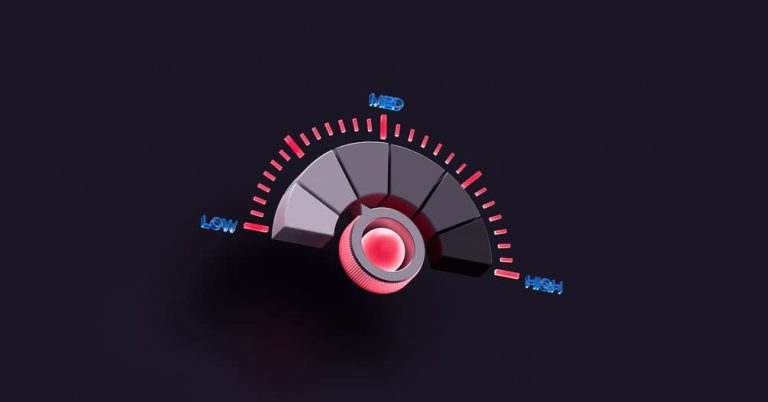
What is Leverage in Trading?
Contents
When traders use borrowed money to get a bigger position in the market than their own money would allow, this is called leverage. It’s kind of like using a tool to lift something: a little work may lead to bigger effects. This approach can pay off when market prices go up, but it also comes with risks. This article goes into detail about how complicated leverage can be in investing and gives you tips on how to use it while keeping the risks under control.
So, leverage in trading is basically using borrowed cash to trade bigger. Think of it as a ladder; it allows you to reach higher.
In simple terms:
- Leverage lets you trade with more money than you own right now.
- It’s like using a credit card. If you have $1,000 and use 10:1 leverage, you can trade like you have $10,000.
- If your trade wins, your profits get bigger! But if you lose, be aware that your losses will also grow just as fast.
When used right, leverage can be super helpful. But you need to have control, planning, and know how to handle risk.
What is Leverage?
When talking about leverage in trading, we are basically talking about the practice of holding a trading position bigger than what would be possible with the trader’s own money through the use of borrowed money.
The use of leverage has evolved over time. In the past only individuals with capital and strong connections to banks or lenders could access leverage. However with financial instruments becoming accessible and online trading platforms emerging, leverage has become widely available. Margin trading in particular has gained popularity, allowing traders to participate in markets that were previously out of reach.
How Leverage Works in Trading (With Step-by-Step Example)
Leverage in trading is easier to understand with numbers, so here’s an example:
- Let’s say you put $1,000 into your account.
- If you use 10:1 leverage, you can control a position worth $10,000.
- If the market goes up by 2%, your position is now worth $10,200.
- That’s a $200 profit – a 20% return on your original $1,000.
- But if the market drops by 2%, your position goes down to $9,800.
- That’s a $200 loss, or -20% on your capital.
Leverage magnifies your outcomes. Small market moves can seriously impact your profits or losses.
Explanation of Leverage Ratios and Margin
Leverage ratios determine the level of exposure to one’s investment. In Forex trading a common leverage ratio might be 50;1. For every dollar in a traders account they can control up to $50 in the market. These ratios play a role in determining the level of leverage involved which in turn impacts the risks and potential rewards.
Depending on the asset class and trading strategies employed different leverage ratios may be required, with some allowing levels of leverage while others advocate for cautious approaches.
Leverage and margin are interconnected concepts; they represent the amount of funds needed in your account to initiate a leveraged trade. It can be likened to a form of security deposit needed to access borrowed funds for trades, almost like collateral. The initial margin requirement is set by the trading platform or broker. It varies depending on the asset class and leverage ratio utilized. If the market moves unfavorably and your account value falls below the margin requirement a dreaded margin call is triggered, prompting you to add more funds to maintain your trade position.
By understanding these principles even newcomers to the markets can begin to see how leverage works and why it serves as both a tool and potentially risky aspect of trading.
Leverage by Asset Type: Quick Look
Different markets let you use different amounts of leverage. Here’s how it stacks up across a few types of assets:
| Market | Typical Leverage | Risk | Regulation |
| Forex | Up to 50:1 | High | Less Strict (for regular people) |
| Stocks | Up to 2:1 (in the US) | Medium | Strict (like FINRA, SEC) |
| Crypto | Up to 100:1 | Very High | Depends on where you trade |
These numbers can change based on the broker you use, where you live, and the type of account you have. Always read the fine print before you trade with leverage.
Examples Across Different Markets: Stocks, Forex, Commodities
Diverse examples exist across markets such as stocks, Forex and commodities. In stock trading, leveraging enables traders to magnify their exposure to fluctuations in share prices.
Imagine a scenario where an investor can control $10,000 worth of stocks by investing $1,000 with a leverage ratio of 10;1. This increased exposure to the stock market means that even small fluctuations in share prices could affect the traders investment either positively or negatively.
When we turn our focus to the markets we see that leverage is commonly utilized here as well. The unique characteristics of the market such as liquidity and ongoing trading opportunities due to the 24/5 nature of the market, make it favorable for using increased leverage. It’s common for traders to handle trading volumes with a small portion of their actual capital.
In commodities trading, leverage gives traders the chance to speculate on price movements of assets like oil, gold or agricultural products. The inherent volatility of commodities markets affected by geopolitical and natural events makes leveraged trades in these asset classes particularly dynamic.
The main difference between stocks and Forex lies in how external global events can cause market shifts that impact positions profoundly.
Across all these markets leveraging enables traders to increase their position sizes beyond what their available capital would allow.
Is Leverage Legal, and Who Keeps an eye on it?
Yes, it’s legal, but it’s watched closely, and the rules change based on where you are and what you’re trading.
Here’s the breakdown:
The United States
If you’re trading stocks, you can only use twice the amount of money you have. That’s because of rules from FINRA and the SEC. Forex trading has its limits, too, depending on who you’re using to trade and what you’re trading.
Europe
To keep retail investors from losing too much cash, the European Securities and Markets Authority (ESMA) put limits on leverage. Common Forex pairs are maxed out at 30:1. Crypto, indices, and stocks have even lower limits.
Crypto Platforms
Leverage can be all over the place and not as controlled. Some sites outside the US might let you go as high as 100:1, but that’s risky and could mean you’re not protected if something goes wrong.
Advantages of Using Leverage
Leverage serves as a tool in the world of finance offering advantages that can boost trading performance when utilized wisely. One key advantage of leveraging a trading account is the potential for increased profits. Through leverage traders can amplify their gains from market movements; even a slight rise in an asset’s price can result in earnings compared to the initial investment. This ability to enhance profits without tying up amounts of capital upfront is especially appealing in Forex markets, where price fluctuations are typically small but can be magnified with leverage.
Efficient use of capital is another aspect of leverage trading. By utilizing borrowed funds to open positions traders can allocate less of their capital freeing up resources for other investments or trades. This efficiency can be transformative for traders with funds who wish to explore trading strategies across different financial instruments or asset classes.
Additionally leverage plays a role in diversifying one’s portfolio. With the capacity to control position sizes larger than their actual capital would allow traders to distribute their investments across assets.
Expanding one’s reach in trading can help minimize the impact of losses caused by the performance of an asset or asset class, which is why many traders find leverage to be a valuable tool for balancing their investment portfolios.
Additionally leveraging plays a role in hedging tactics. Traders and investors utilize leverage to establish positions that can counterbalance losses from holdings acting as a safeguard against unfavorable market shifts. For example, if someone has a stock portfolio they may use leveraged Forex trading to mitigate currency related risks. This strategic use of leverage highlights its importance in implementing risk management strategies.
Best Practices for Using Leverage
Leverage can boost your profits, but only if used responsibly. Here are essential tips for using leverage safely:
- Start Small – Begin with low leverage (like 2:1 or 5:1) to figure things out and get used to how the market moves.
- Risk Control – Don’t risk over 1-2% of your money on a single trade. This protects you if a few trades go south.
- Always Use a Stop-Loss – Set a stop-loss to limit your losses. It’s vital, especially when the market’s jumpy.
- No Revenge Trading – Avoid increasing your leverage after a loss. Stick to your plan.
- Stay Calm – Leverage amplifies emotions. Don’t let feelings control what you do.
- Know Your Margin – Keep tabs on your broker’s margin rules. Watch your positions to avoid margin calls.
Who Should Use Leverage, And Who Shouldn’t?
Leverage can supercharge your trades, but it’s not for everyone.
Great if you are an experienced trader:
- If you understand how technical analysis, managing risk, and reading the market work,
- If you’ve got a solid plan that you stick to.
- If you’re on top of your positions and can make quick calls.
- If you can keep your cool and not freak out over wins or losses.
Be careful if you are a beginner:
- New traders often see leverage as a shortcut to quick returns, but beginner trading principles emphasize discipline over speed.
- But if you don’t know what you’re doing, leverage can make your mistakes way worse.
- If you’re new, start small (or not at all) and learn the ropes first.
Leverage doesn’t magically make you successful, it just makes things bigger. As a beginner, focus on learning, and don’t bet more than you can lose.
Risks and Considerations
Nevertheless the qualities that make leverage appealing also bring about notable risks. On the other side of the coin lies the possibility of escalated losses; just as gains can be amplified so can losses. Leverage is often compared to a double-edged sword because if the market moves against a trader’s position, the incurred losses can quickly surpass the investment, sometimes necessitating additional deposits from the trader to cover the deficit.
Margin calls pose a risk in trading. These occur when the value of positions drops below the set threshold, prompting the platform to request further funds for maintaining those open positions. Margin calls can arise unexpectedly in markets, forcing traders to sell off positions at a loss if they are unable to promptly meet the margin requirement.
Market volatility can be especially dangerous for trades. Unstable market conditions may lead to rapid price fluctuations, increasing the risk exposure of positions. This could result in adjustments being necessary to keep the required margin while swift market movements may challenge seasoned traders risk management approaches.
You may also like

Whether its traders or established hedge funds, the financial world has seen how leverage can result in major setbacks when market conditions take a downturn. These incidents often shed light on risk management practices, an overestimation of market predictability or the sheer unpredictability of markets that can invalidate even the most carefully planned leverage strategies.
Given these factors, recognizing and acknowledging the risks associated with leverage is crucial. It calls for an approach that integrates strict risk management principles and a realistic evaluation of market conditions and one’s own financial resilience.
KEY TAKEAWAYS
- Leverage in trading acts as a multiplier, enabling traders to amplify their market presence and potential profits by using borrowed capital. It’s not just about bigger gains; it’s about utilizing calculated financial leverage to open larger positions than one’s own capital would allow, all while maintaining a keen eye on risk versus reward dynamics.
- The strategic use of leverage goes beyond mere speculation, serving as a key component in sophisticated trading strategies. It’s about leveraging financial tools to craft a portfolio that can withstand market fluctuations and capitalize on market movements with foresight and agility.
- Effective risk management strategies are the linchpin of successful leveraged trading. Understanding the implications of margin requirements and the potential for margin calls is crucial, turning risk awareness into a trader’s steadfast compass in the often-turbulent financial seas.
- Leverage is a powerful force in trading, and like any force, it must be respected and understood. An educated approach to leverage involves recognizing its double-edged nature—where there’s potential for higher rewards, the risks are equally magnified. The savvy trader will use leverage as a calculated component within a broader, well-considered investment strategy.
Common Misconceptions and the Truth about Leverage
Leverage sounds cool, right? Bigger wins, less money down, faster gains. But people often mess it up because they believe some wrong stuff. Let’s look at some of these myths and what’s really going on:
Myth 1: Leverage Always Means More Money
Truth: Leverage makes wins and losses bigger.
Lots of traders think leverage is a sure thing for making cash. It can boost what you get back, but it can also make you lose way more. If the market drops 2% and you’re using 20:1 leverage, you could lose 40% of your investment. Without a stop-loss, a small mistake can wipe out your whole account.
Myth 2: The More Leverage, the Better
Truth: More leverage means more risk.
It’s tempting to go big with the highest leverage possible, like in Forex or crypto, where you can get 50:1 or even 100:1 on some sites. But the more leverage you use, the less wiggle room you have. If the market moves just a bit against you, you could get a margin call or have your position closed automatically.
Myth 3: Only Pros Use Leverage
Truth: Anyone can use leverage, but you have to be smart about it.
Lots of platforms offer leverage options that are easy to understand, even if you’re just starting out. But just because you can use it doesn’t mean you should. Even if you’re new, you can use leverage as long as you know the rules (margin requirements), control your risk, and start small.
Myth 4: Leverage Is Just for Forex or Crypto
Truth: You can use leverage in lots of markets – stocks, commodities, and more.
Forex and crypto are known for high leverage, but you can also trade on margin in other areas. Each market has different rules and limits for leverage, so make sure you know what’s up before you start.
Myth 5: You Need Lots of Money to Use Leverage
Truth: Leverage is there to help people with less money get involved, but it contains risk.
Leverage lets smaller traders play in a bigger pool without needing tons of money. Still, it’s not a replacement for being smart with your money. It’s not a get-rich-quick thing – you have to control it.
Myth 6: Leverage Is a Strategy
Truth: Leverage is just a tool.
People often think that using leverage is a strategy. It’s not. Leverage should make a good trading system even better. It doesn’t replace doing your homework, looking at charts, and being disciplined. If you don’t have a plan, leverage will just get you into trouble faster.
Risk Management Strategies for Leveraged Trading
Engaging in leveraged trading can amplify both profits and losses underscoring the importance of risk management for success. Without proper risk management, the very tools that enhance gains could just as easily result in substantial losses. Below are a strategies to help you mitigate risks when trading with leverage:
Implement Stop Loss Orders
A stop loss order is a predetermined price point at which your trade will automatically close to restrict your losses. This represents one of the risk management techniques. By utilizing a stop loss you can ensure that your losses are limited to a level that aligns with your risk tolerance in volatile market conditions. The key is to set the stop loss at a level that allows for some flexibility while safeguarding your invested capital.
Employ Trailing Stops
A trailing stop functions as a type of stop loss order that adjusts with changes in market prices. You can secure your profits in a rising market while still protecting against losses by using a trailing stop. When the market price goes up the trailing stop also moves up. If the market price drops the trailing stop stays at its point to help you keep some of your gains.
Maintain a Risk-Reward Ratio
Additionally it’s important to maintain a risk reward ratio when trading long-term. This ratio indicates how much risk you’re willing to take for rewards. Aiming for at least 1:2 or higher is often recommended, where you risk $1 for a potential gain of $2 or more.This strategy ensures that your potential profits exceed losses, which is crucial for sustained success, in trading.
Diversify Your Trades
Diversifying your trades is crucial for managing risk in trading. By spreading out your investments across asset classes, sectors or regions you can lessen the impact of any trade performing poorly. Diversification helps stabilize returns and lowers risk.
Psychological Factors in Leveraged Trading
Trading with leverage doesn’t just test your acumen—it also evaluates your strength. The amplified potential for both profits and losses can trigger decision making tendencies that can undermine trading strategies. Understanding the components at play in trading and learning how to control them are essential for achieving sustained success over time.
Dealing with Stress
The fear of losing more than what you invested can really weigh on you, causing a lot of stress that might lead to making decisions. Stress has a way of clouding your judgment and making it hard to stick to your trading plan often resulting in closing trades early or on the side holding onto losing positions for too long in the hope that things will turn around.
Overconfidence
Using leverage can sometimes give traders a sense of confidence after a streak of successful trades. This false belief might make them think they have more control over the market than they actually do, leading them to take risks beyond what’s wise. This overconfidence can lead to leveraging, disregarding risk management principles and ultimately experiencing losses.
FOMO: Fear of Missing Out
One common pitfall is FOMO, which can make traders act hastily when using leverage. The promise of profits might tempt you to jump into trades without analysis because you’re afraid of missing out on an opportunity.
To combat FOMO, create a trading plan. Stick to it. Set criteria for entering and exiting trades. Resist the urge to deviate from your rules even if a market movement seems too good to pass up.
You may also like

Emotional Ups and Downs
Big gains can bring euphoria while significant losses can lead to despair. These emotional swings may cloud your judgment causing you to chase losses or become overly excited, about wins leading to trading behavior.
To manage these emotions effectively, try to detach yourself from each trade and lean on foundational principles from trading psychology. Avoid getting caught up in trade results and instead concentrate on the perspective – long term profitability. Maintaining a trading journal can assist you in monitoring your reactions and recognizing any patterns that could impact your decision making process.
Paralysis by Analysis
When the risks are heightened, there is potential for “analysis paralysis” – the struggle to make decisions due to scrutiny of market data. This can result in missed opportunities or delayed responses to market shifts.
Streamline your trading routine by focusing on indicators and signals that align with your strategy. Establish a time constraint for analysis before reaching a decision and have faith in your trading blueprint. Consistent practice and experience will build the confidence needed to make decisions.
Bottom Line
Leverage goes beyond increasing purchasing power; it involves decision making and careful risk assessment. It provides opportunities for trading strategies, empowering traders to make progress in the financial realm. With the insights shared in this article traders are better prepared to view leverage not as a tactic but as a tool, in their trading arsenal—one that needs to be finely tuned to match market rhythms and personal financial objectives.
FAQ
Leverage lets you trade bigger amounts than you have in your account. It’s like borrowing money to increase your trading power, which can mean bigger wins or bigger losses.
Leverage can bump up your profits, but it can also make your losses way bigger. You could lose more than you put in if you're not careful. Using stop-loss orders is a good idea to protect your money.
If you're a beginner, start with low leverage, like 2:1 or 5:1. Get to know the markets and learn how to manage risk before going higher.
If your account dips too low and you don't add more funds, your broker might close your trades automatically, and you'll take a loss.
You can use leverage with Forex, stocks, crypto, commodities, and indices. How much you can use depends on what you're trading and the rules in your area.
Not really. Leverage is the amount you can borrow, and margin is the money you need in your account to keep a trade open.
Updated:
July 11, 2025
8 January, 2026
Stock Market Hours: When Does The Market Open?
Most major stock markets are open Monday to Friday, with opening times depending on the exchange and its time zone. For example, US stock markets open at 9:30 AM ET, while the London Stock Exchange opens at 8:00 AM UK time. There is no regular stock trading on weekends. Below, you’ll find a clear, practical […]



